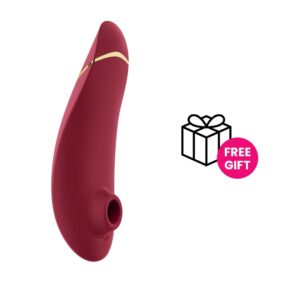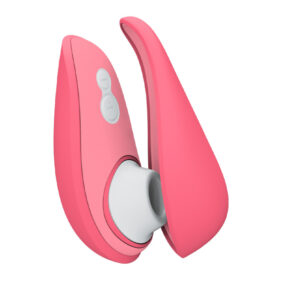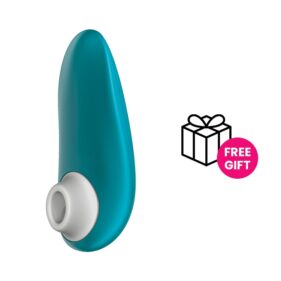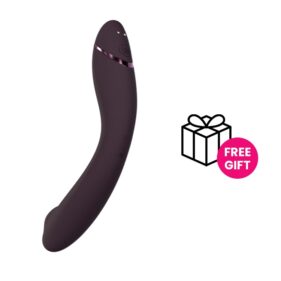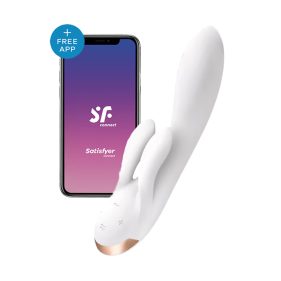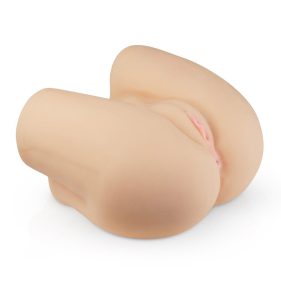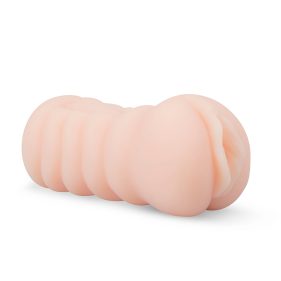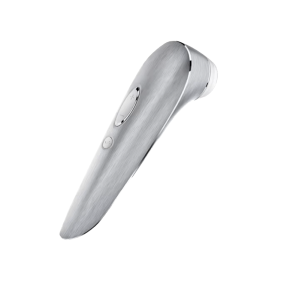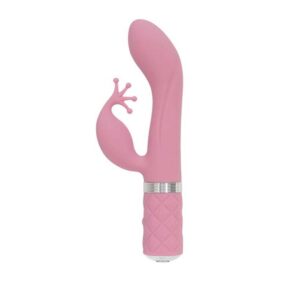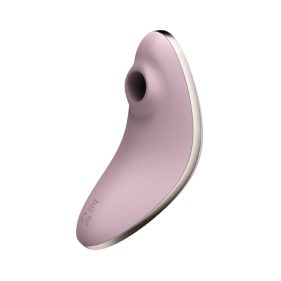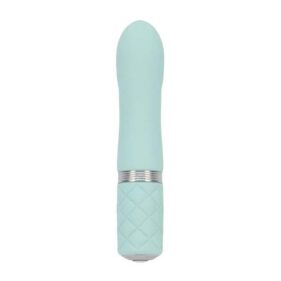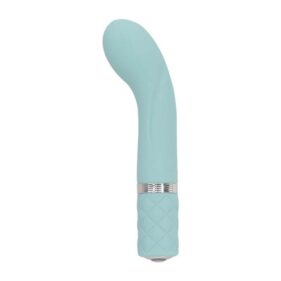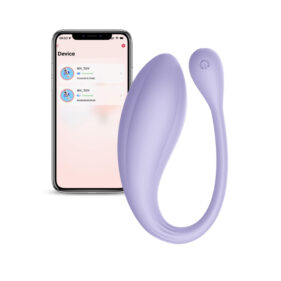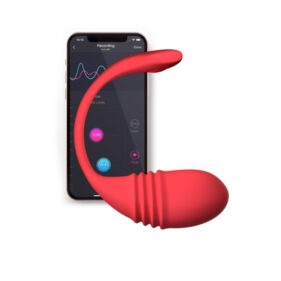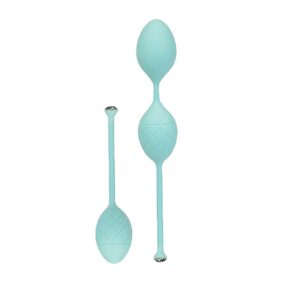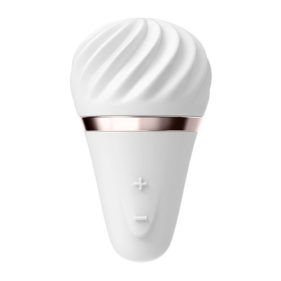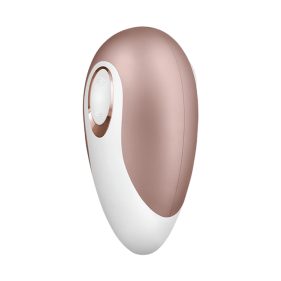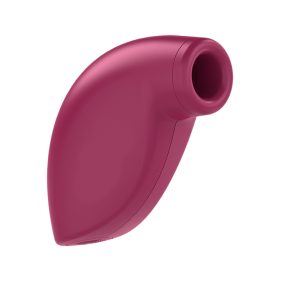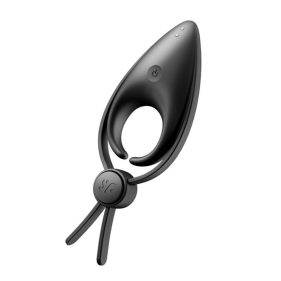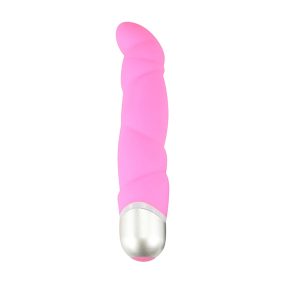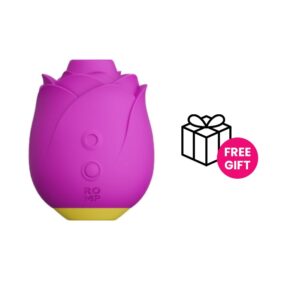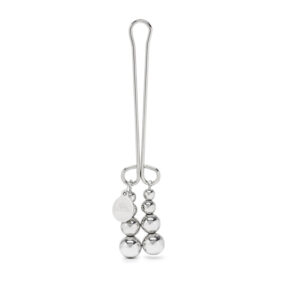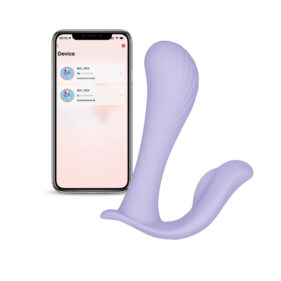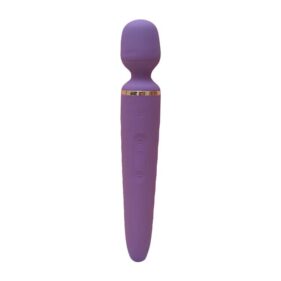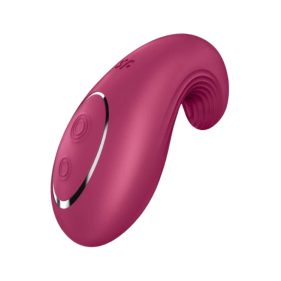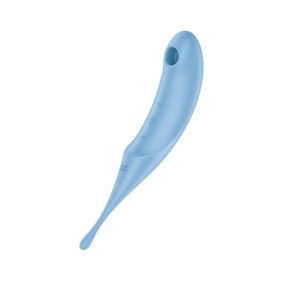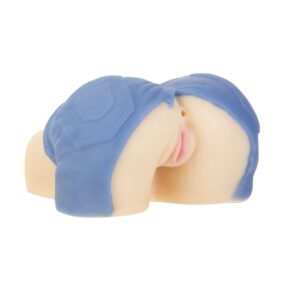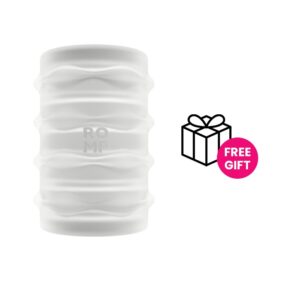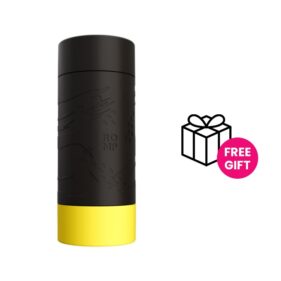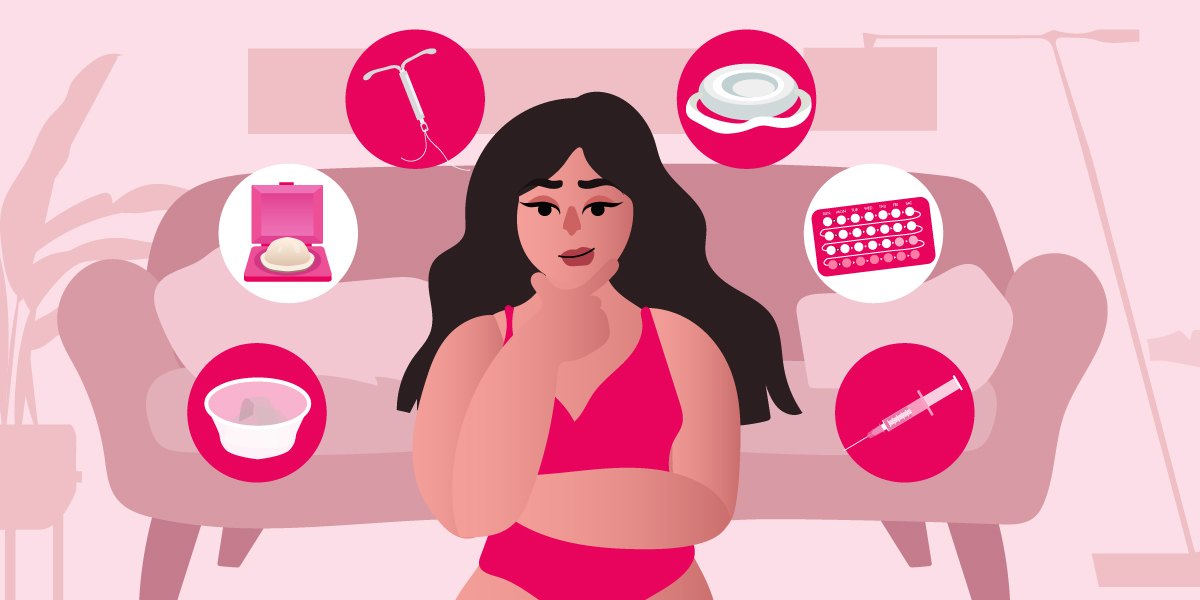
Looking for the best types of birth control for women? Well, settle in. We’ll discuss how you can get that D safely using different types of contraceptives.
As we venture in modern times, women have become free to fulfill their sexual needs.
However, leading an active sex life have its consequences. As more women open themselves to hookups and other sexual activities, more of them are getting unexpected pregnancies and sexually-transmitted diseases.
“So are you saying that us girls should keep our needs to ourselves? That sex is bad all along?”
Nope, sis. Sex isn’t bad at all—we just need to be smarter. Before diving into sexual explorations, make sure to research about the different types of birth control for women. Don’t just take the first contraceptive that’s available. Look for devices that suit your health status and preferences.
Now, if you’re overwhelmed with the birth control options, don’t worry because we’re here to help. We’re here to share the different types of birth control for women, informing you of how each birth control works, their effectivity, as well as their side effects.
But before we discuss the different birth control types, let’s have a quick refresher as to what birth control is all about.
What is Birth Control and Its Benefits
You’ve probably heard about this in your high school health class, but for those who are not familiar with this term, Birth Control is a method or device that is used to prevent pregnancy and sexually-transmitted diseases (STDs).
Also known as Contraception and Fertility Control, most cultures are open to this practice, while some traditional cultures are still condemning the use of birth control as it breaks their moral and religious beliefs. Some are even mentioning that birth control is an indirect way of killing a baby—something that’s debunked in the medical field.
Despite the backlash of some cultures, contraceptives are still considered a helpful way for women to prevent unexpected pregnancies. Besides, women should be allowed to take control of their bodies. They should be given a chance to prepare themselves before having a baby– birth control methods allow them to do so.
Also, most birth control methods for women bring other benefits that could improve one’s sexual health, such as the following:
1It regulates menstrual cycles.
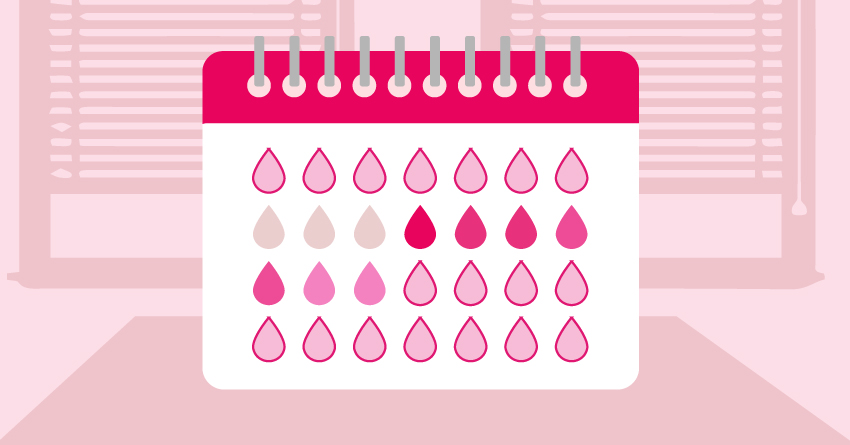
Hormonal birth control methods can balance the hormonal fluctuations during your cycle, solving some of the menstrual issues along the away, such as irregular bleeding.
2It makes periods less painful.
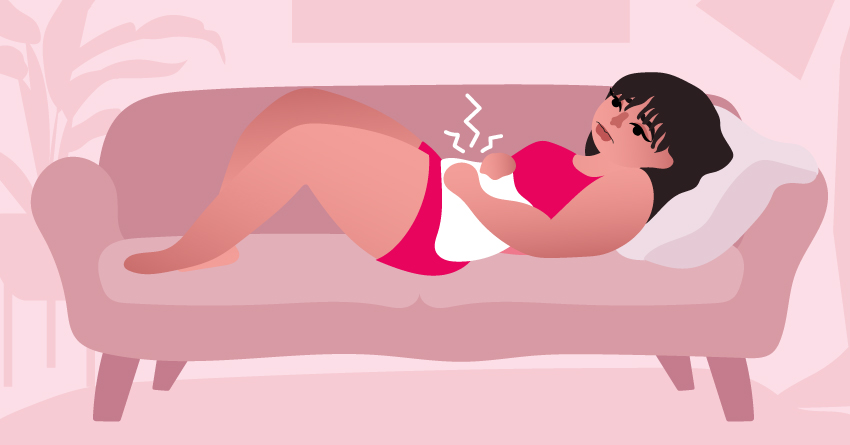
If you’re using hormonal control methods and are suffering from painful periods, you’re in luck. Hormonal birth control methods prevent ovulation, saving your uterus from painful contraction that happens during ovulation.
3Reduces hormonal acne.

Fluctuations in your hormones is an acne trigger. If it’s not balanced, expert a ton of spots—aka hormonal acne– growing on your face. Bummer right?
Fortunately, birth control for women such as contraceptive pills can minimize hormonal fluctuations. Birth control pills also contain materials that are “acne fighters” such as estrogen and progesterone, giving your skin a much-needed break.
4Reduces the risk of uterine cancer.
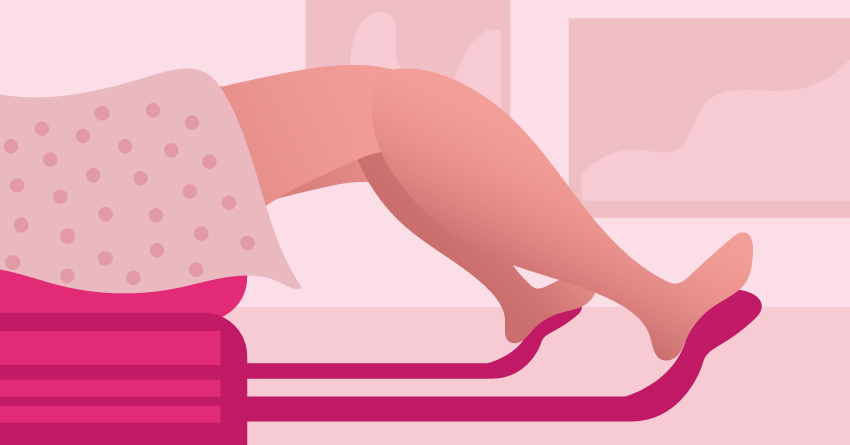
Hormonal birth control methods can also give long-term effects on your health, as women who take birth control pills are 50% less likely to get uterine cancer.
5Relieves symptoms of PMS.

Most women experience physical and emotional changes before getting their periods, also known as PMS or Premenstrual Syndrome. They get food cravings, abdominal bloating, sore breasts, acne, irritability, anxiety, or even fatigue. However, if you’re using hormonal birth control methods such as pills, you will experience fewer symptoms of PMS.
13 Types of Birth Control for Women
As you finish reading our quick refresher above, we can sense that you’re convinced on trying fertility controls. Well then, let’s go to the main topic.
We’ve gathered up the 13 types of birth control for women. For each method, we will discuss the method of insertion, maintenance, effectivity, side effects, as well as its STD-protection capabilities. Read away!
1Birth Control Implant

The birth control implant, also known as Nexplanon, is a tiny, match-like rod that when inserted to your body, releases hormones that prevent you from getting pregnant.
How to use it: A doctor or nurse will insert the implant under the skin of your upper arm, then voila! You’re free from pregnancy for up to 3 years. Once the insertion procedure is done, you wait for a week before having sex.
How does it work: Once the rod is inserted under your skin, it releases the hormone Progestin. Now this hormone will either thicken the mucus on your cervix, stopping the sperm from swimming through your egg, or either stop your eggs from leaving the ovaries.
Advantages: It lasts up to 3 years with no maintenance required. You just need to remember the scheduled removal date. But if you decide that you don’t want to get pregnant or simply want to use other birth control methods, you can have it removed anytime.
Disadvantages: In the first 6-12 months of usage, you may experience irregular bleeding or spotting. You may also experience mood swings, hormonal acne, breast pain, weight gain, and pain or bruising to the spot where the implant was inserted.
Effectivity: 99%
Can it protect you from STDs: Nope. Use other types of birth control for women that can protect you from sexually-transmitted diseases, such as regular or female condoms.
2IUD

IUD, which stands for Intrauterine Device, is a small piece of flexible, T-shaped plastic that is inserted on your uterus to prevent pregnancy.
How to use it: You will need to get an appointment with a medical professional first. They will conduct a checkup first to ensure that your vagina is able to handle the contraceptive device. Once everything’s settled, the nurse or doctor will put a speculum (instrument to separate the vaginal walls) into your vagina, and then use a special inserter to put the IUD through the opening of your cervix and into your uterus. Once the procedure is done, you can start having sex once you get used to the device.
How does it work: IUDs prevent pregnancy by changing the way sperm cells move. It contains materials that sperms dislike, such as copper. Other IUD variations also release hormones that thicken the mucus that lives on the cervix, blocking the sperms from reaching the egg.
Advantages: It lasts up to 3-12 years, depending on the variant that you’re using. Just like the implant, you just need to remember the insertion date/removal date, no maintenance required. Also, if you decided to get pregnant or try out a different birth control method, you can remove it anytime.
Disadvantages: You may experience side effects, such as pain on the inserted area, spotting between periods, heavier periods, and worse menstrual cramps. These side effects usually occur in the first few months of usage, but if it doesn’t seem to get better, consult your doctor.
Effectivity: 99%
Can it protect you from STDs: Nope. Use other types of birth control for women that can protect you from sexually-transmitted diseases, such as regular or female condoms.
3Birth Control Shot
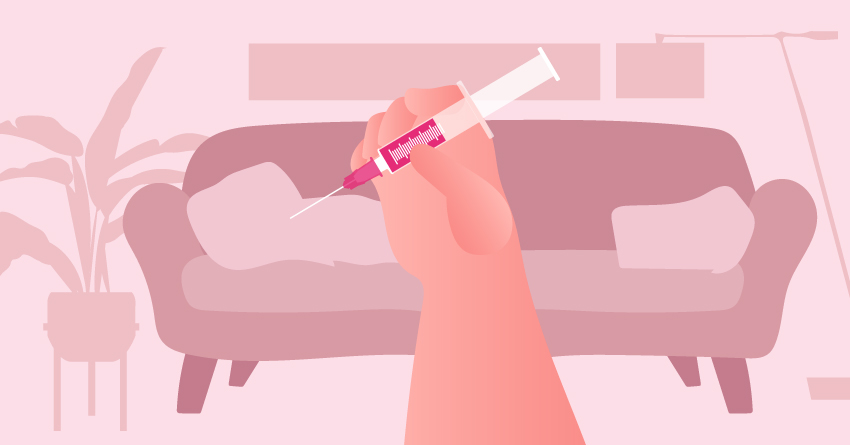
Also called Depo-Provera, Depo Shot or DMPA, a Birth Control Shot is an injection that you get once every 3 months. It’s a safe and convenient birth control method that works well as long as you get the shots on time.
How to use it: For starters, set an appointment on a local clinic or health center. If it’s your first time, you may expect to answer some questions. Once the brief assessment is done, you will then get your shot. Now, if you get your first shot within the first 7 days of your period, you’re already protected and can have sex right away. But if you get it at any other time in your cycle, wait for a week before engaging in any sexual activities.
How does it work: The shot releases the hormone Progestin, which prevents ovulation. It also makes the cervix thicker, blocking the sperm from reaching the egg.
Advantages: The process is quick and convenient. If you’re not comfortable with devices being inserted into your body, you may want to go for this one. It can also make your periods lighter, protect you from uterine cancer, and prevent you from getting ectopic pregnancy.
Disadvantages: You need to get an injection every 3 months, which is for busy bees, can be a bummer. You can also experience headaches, breast tenderness, nausea, and depression.
Effectivity: 94%
Can it protect you from STDs: Nope. Use other types of birth control for women that can protect you from sexually-transmitted diseases, such as regular or female condoms.
4Birth Control Vaginal Ring

Also known as NuvaRing, a Birth Control Vaginal Ring is a safe, convenient, and painless birth control method. You only need to wear a small and flexible ring inside your vagina, preventing pregnancy as the ring releases hormones into your body.
How to use it: Consult a medical professional before getting the ring, as NuvaRings require prescriptions. After that Insert the ring into your vagina once every 3-6 weeks, depending on your prescribed schedule. If you only used the ring for the first time, wait for a week before engaging in intercourse.
How does it work: The hormones contain estrogen and progestin which stops the ovulation process. It also thickens the cervical mucus, blocking the sperm to reach the egg.
Advantages: It’s easy-to-use and painless. It can also make your periods lighter, lessen your acne, prevent infections on internal parts of your vagina, and relieves PMS symptoms.
Disadvantages: Remembering the insertion schedule of the ring may be a hassle for some. With this, make sure to get an alarm or have your partner remind you. Aside from the schedule, you may experience spotting between periods, sore breasts, headaches, and extra vaginal wetness.
Effectivity: 91%
Can it protect you from STDs: Nope. Use other types of birth control for women that can protect you from sexually-transmitted diseases, such as regular or female condoms.
5Birth Control Patch

The Birth Control Patch, also known as the Transdermal Contraceptive Patch, is an easy-to-use fertile control method that only requires you to stick it into certain parts of your body.
How to use it: Prescription is required, so consult your OB-Gyne before purchasing this birth control. Once you have it, open the packaging as instructed. Take the patch off the foil then peel half of the clear layer of plastic. As much as possible, don’t touch the sticky part with your fingers as you may remove some of the ingredients. Then, press the patch on your upper arm, belly, back or butt cheeks.
If you’re the patch for the first time, make sure to wait for at least 7 days before having sex, or use another birth control (such as condoms) if you can’t keep up with heat.
As for the duration of usage, you can put the patch up to 7 days. Once the 7 days are up, you need to replace the patch with a new one (be consistent with this!)
How does it work: As most of the birth control methods on this list, the patch contains estrogen and progestin. Once you wear the patch, the skin will absorb these hormones on your body, stopping the ovulation process. If there’s no ovulation, there wouldn’t be any egg cell chillin’ around for the sperm to fertilize, preventing you from pregnancy.
Advantages: It’s one of the most convenient birth control methods. No more additional consultations, insertions, or injections—just stick the patch and you’re good to go. It can also help with menstrual cramps and make your periods lighter.
Disadvantages: Along with its convenient usage, birth control patches require strict maintenance. You have to replace the patch exactly every week. If you’re gonna miss a day, you’ll have higher risks of getting pregnant.
Effectivity: 91%
Can it protect you from STDs: Nope. Use other types of birth control for women that can protect you from sexually-transmitted diseases, such as regular or female condoms.
6Birth Control Pill
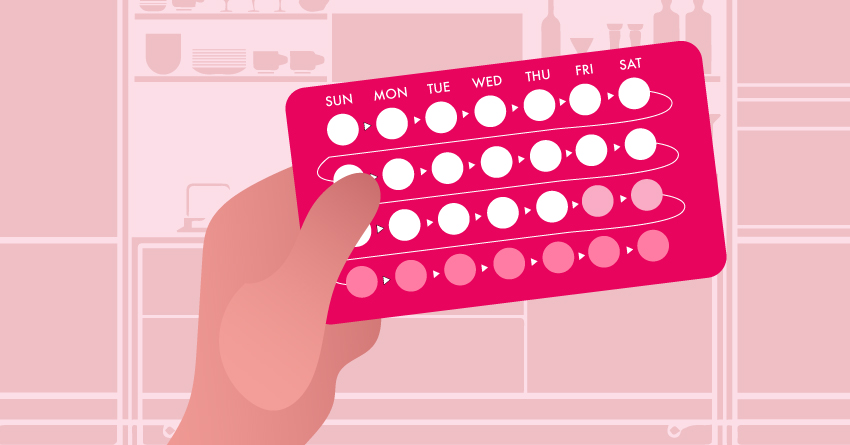
Also known as “The Pill”, the Birth Control Pills are medicine-like birth control for women. It’s convenient, doesn’t require insertions or injections, and discreet since you just take it in just like your everyday vitamins.
How to use it: Consult your OB-Gyne first as getting this birth control requires a prescription. Once you’ve purchased the prescribed pills, you may take 1 pill every day, as scheduled. As for its schedule, different brands have different schedules, so make sure to ask your OB-Gyne about that. If you’ve only taken the pill for the first time, it’s best to wait until 7 days to have sex or use backup birth control, like condoms.
How does it work: Same with most fertility control methods, these pills stop ovulation, making sure that no egg would be hanging around to get fertilized.
Advantages: It’s convenient and easy-to-use. It’s perfect for those that didn’t want to go with medical insertions or injections. It can also make your periods better, making the flow lighter and reducing your menstrual cramps.
Disadvantages: It must be taken as scheduled. If you’re miss busy-bee and tend to be forgetful, you might reconsider looking for other birth control methods that require minimal maintenance, such as implants or IUD. There are also some side effects such as light spotting between periods. And once you stop using birth control pills, you may experience PMS symptoms, mood swings, changes in vaginal discharge, as well as changes in your skin.
Effectivity: 91%
Can it protect you from STDs: Nope. Use other types of birth control for women that can protect you from sexually-transmitted diseases, such as regular or female condoms.
7Female Condom

Also known as internal condom, a female condom is just like a regular condom, but instead of covering up the penis, the female condom goes inside your vagina or anus.
How to use it: Consult your healthcare provider first before using this type of birth control for women, as some pharmacies require a prescription of this contraceptive. Once getting it, you may wear it before the deed.
First, take off the condom from its packaging. If you’re using it for vaginal sex, leave the inner ring in. Get into a comfortable position, where you can spread out your legs, then gently squeeze together the sides of the inner ring at the closed end of the female condom, and slide it in like a tampon. Push the inner ring as far as it can go. Make sure that the female condom is not twisted by inserting your finger. If it slides in easy, you’re good to go! As for anal sex, simply remove the inner ring, then push the female condom inside your anus with your finger.
To remove it, twist the outer ring (the one’s that outside your vagina) to keep the cum inside the female condom. Slowly pull it out of your vagina and anus, throw it into the bin, and you’re done!
How does it work: This soft plastic (nitrile) pouches cover the inside of your vagina and vulva, as well the internal part of your anus in case you’re going for some backdoor action. Since your genital is all covered up, semen will have fewer chances of entering your vagina.
Advantages: With our long list of birth control for women, female condoms are just one of the few types that can protect you from pregnancy and STDs. It’s also better than regular condoms as you can put the internal condom before playtime—it doesn’t ruin the moment.
Disadvantages: It may take some time on getting used to and may even feel uncomfortable on first tries. You also need to put this on every time you have sex, so spontaneous sexcapades are out of the picture. Some may also feel irritation on their vagina, vulva, anus, or penis when using this, but it’s usually due to friction, so make sure to put some extra lube.
Effectivity: 79%
Can it protect you from STDs: Yes! As it covers some parts of vulva, vagina, and anus, it decreases the risk of getting in contact with semen.
-
₱3,400.00
-
Original price was: ₱2,745.00.₱2,470.50Current price is: ₱2,470.50.
-
Original price was: ₱4,745.00.₱4,270.50Current price is: ₱4,270.50.
-
₱895.00
8Diaphragm
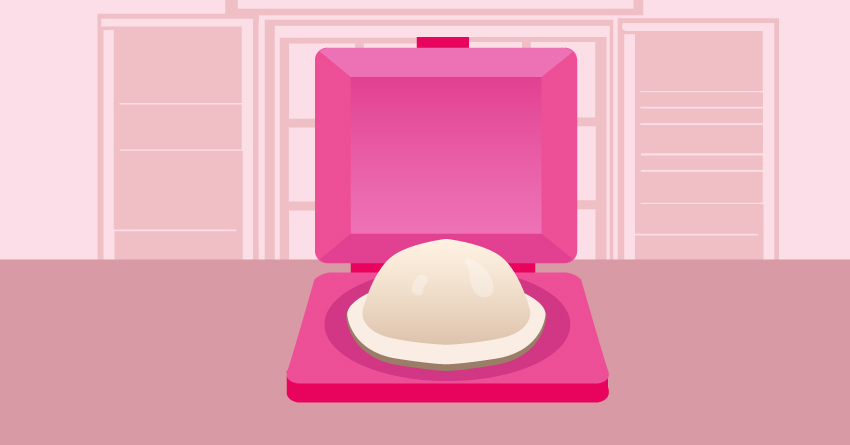
The diaphragm is a simple and effective type of birth control for women that don’t require surgery, injections, nor medical insertions. It’s a cup-shaped device that’s made of soft silicone that you insert in your vagina, covering your cervix.
How to use it: For starters, consult your OB-Gyne or other trusted specialists about this contraceptive, as you need a prescription before availing this. Once you have it, you can read the instructions on the packaging on how to insert it, ask your doctor about it, or see illustrated guides such as this guide from planned parenthood.
How does it work: As this birth control device covers your cervix, it stops the fertilization process. It also contain spermicide which slows or kills down the sperms.
Advantages: The Diaphragm is convenient, reusable, and hormone-free. It’s also small enough to carry anywhere, perfect for out-of-town sexcapades. Same with female condoms, it doesn’t interrupt sex. You can insert this birth control up to 2 hours before having sex.
Disadvantages: You have to use it every time you have sex, which is a bummer for some. Also, Diaphragms can be difficult to use properly. If there’s a lot of intense thrusting going on, it can get moved out of place, thus increasing the risks of pregnancy.
Effectivity: 88%
Can it protect you from STDs: Nope. Use other types of birth control for women that can protect you from sexually-transmitted diseases, such as regular or female condoms.
9Birth Control Sponge
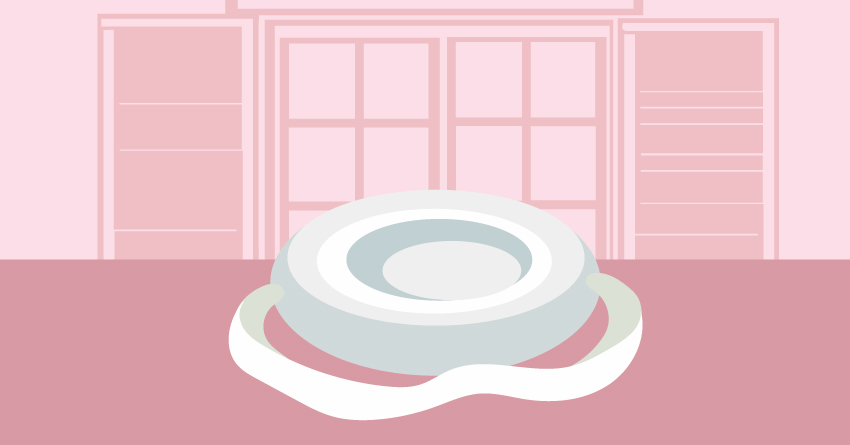
The Birth Control Sponge, also known as “The Sponge”, is a tiny round sponge made from soft, squishy plastic. You only need to insert it inside your vagina before sex, covering your cervix and contains spermicide to prevent pregnancy.
How to use it: Since it doesn’t require a prescription, you may get it to sexual health organizations or to your local pharmacy. Once you have it, take the sponge out of the packaging with your sanitized hands, wet it with clean water to activate the spermicide. Once it’s wet and foamy, insert sponge inside. See the instructions on the packaging or illustrated guides such as this guide from planned parenthood.
How does it work: Since it covers your cervix, the Birth Control Sponge blocks the entrance to your uterus so the sperm can’t get to your egg. It also contains spermicide, slowing the sperm down.
Advantages: It’s convenient and doesn’t require any medical procedures, giving you 24 hours of pregnancy protection. It also doesn’t interrupt the moment, since you can put the sponge hours before playtime.
Disadvantages: Same with other types of birth control for women, you need to use the sponge every time you have sex. It may also take some time to insert the sponge correctly, so for the first-timers, make sure to use backup contraceptives, such as condoms. It can also irritate your vagina as this birth control contains Nonoxynol-9. That’s why you need to check in first if you’re sensitive to this ingredient before using it.
Effectivity: 76 – 88%
Can it protect you from STDs: Nope. Use other types of birth control for women that can protect you from sexually-transmitted diseases, such as regular or female condoms.
10Cervical Cap

A Cervical Cap is like a Diaphragm, only smaller and slightly altered shape. Instead of shaping like a cup, it’s shaped like a sailor’s hat.
How to use it: First, consult your OB-Gyne about this type of birth control for women, as you need a prescription when getting this device. Once you have it, you can insert the Cervical Cap by following the instructions from the packaging, your doctor, or illustrated guides such as this one from planned parenthood.
How does it work: The Cervical Cap covers your cervix, stopping the sperm from fertilizing the egg. It also contains spermicide that slows or kills the sperms.
Advantages: Just like the Diaphragm, it’s convenient, reusable, and hormone-free. It’s also small enough to carry anywhere, perfect for out-of-town sexcapades. It also doesn’t interrupt the heated moment, since you can put this device at least 2 hours before playtime.
Disadvantages: You have to use it every time you have sex, making it annoying to some women. There is also some difficulty in putting it in, increasing the risk of pregnancy. That’s why when using it for the first time, use a backup contraceptive such as condoms.
Effectivity: 71 – 86%
Can it protect you from STDs: Nope. Use other types of birth control for women that can protect you from sexually-transmitted diseases, such as regular or female condoms.
11Spermicide
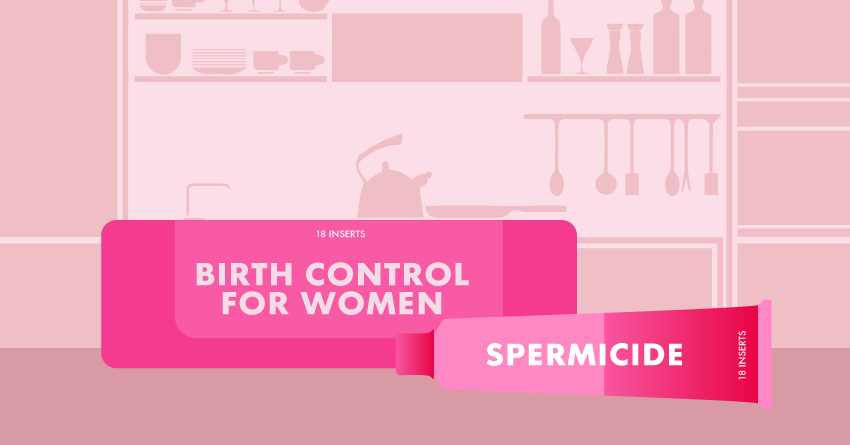
As the name suggests, the spermicide is a type of birth control for women that kills the sperm. By doing this, no sperm will be able to fertilize with your egg, thus no pregnancy.
How to use it: As spermicides come in many forms (gels, film, foams, creams, suppositories), it’s better to research the spermicide that is most suitable for you. You can then get this birth control through sexual health orgs or local pharmacy—no prescription required. Once you have it, you can use the spermicide by putting it in deep into your vagina using your fingers or with an applicator that comes with it. Take note though, some variants may require you to wait 10-15 minutes after application before you can start having sex. Most variants are only effective for 1 hour after application, so keeping track of the time is essential.
How does it work: It blocks the entrance to the cervix, so your man’s sperm can never get to your egg. Most variants also kill the sperm, stopping the fertilization process.
Advantages: It’s convenient and doesn’t require any medical procedures. You can also put the spermicide before playtime, so playtime wouldn’t get interrupted.
Disadvantages: You may experience some irritation due to its main ingredient, Nonoxynol-9. If you ever experience irritation, stop using this birth control right away. Also, you need to use every time you have sex, which is a bummer for some.
Effectivity: 71%
Can it protect you from STDs: Nope. Use other types of birth control for women that can protect you from sexually-transmitted diseases, such as regular or female condoms.
12Sterilization (Tubal Ligation)
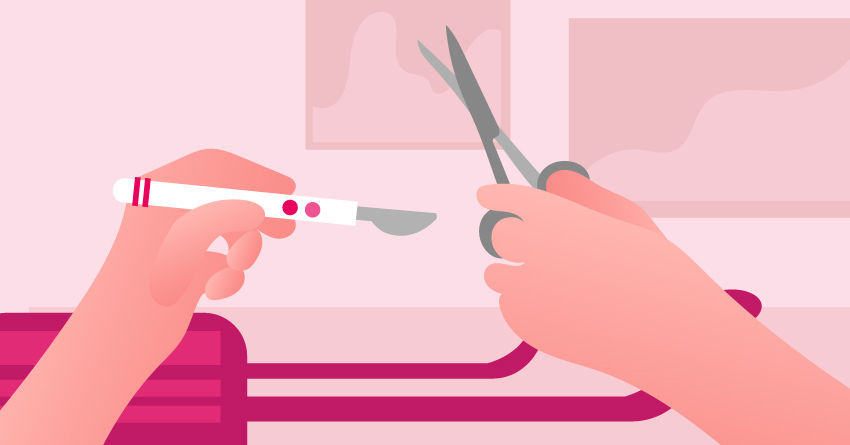
Looking for one of the most effective ways of preventing pregnancy? Go for Sterilization. Also known as Tubal Ligation, this method is a safe and effective surgical procedure the permanently prevents you from getting pregnant.
How to use it: First, assess yourself. Are you sure about not wanting children in the future? If you’re about it and are not pressured in any way, you may consult your OB-Gyne about this. Once everything is discussed, you can set up an appointment for the procedure.
How does it work: This surgical procedure permanently blocks your fallopian tubes, one of the key parts during the ovulation process. When the fallopian tubes are blocked, the sperm can no longer get into the egg and make you pregnant.
Advantages: It’s hella effective. It’s not a device that requires replacement so there’s no way you can mess this up. It also provides permanent protection from pregnancy and doesn’t alter your hormones.
Disadvantages: It’s irreversible. Sure, there are ways that you can get your fertility back but those procedures are expensive, complicated and most of the time, do not work. That’s why before getting this birth control procedure, thoroughly assess yourself.
Effectivity: 99%
Can it protect you from STDs: Nope. Use other types of birth control for women that can protect you from sexually-transmitted diseases, such as regular or female condoms.
13Outercourse and Abstinence

If you don’t want to spend money, avail meds, and put yourself to medical procedures, you may want to consider this birth control method.
Outercourse is sexual activities that don’t require vaginal or anal penetration. On the other hand, Abstinence is a practice that requires you to not have sex at all.
How to use it: These practices may have different interpretations per person. Some women may consider oral sex as an outercourse activity, while others still consider the same as penetrative sex. That’s why communicating with your partner is important. You also need to consider how long are you gonna do these practices.
How does it work: Since you’re not putting your partner’s penis in your vagina, there’s no way for you to get pregnant.
Advantages: It’s very effective! It also lets you discover sexual activities that don’t require penetration, such as mutual masturbation, roleplaying, BDSM and the usage of sex toys.
Disadvantages: Well… you can’t have sex and that sucks at times. Good thing there are sex toys that can help you fulfill your sexual urges.
Effectivity: 100%
Can it protect you from STDs: Yes! As long as your vagina isn’t in contact with your man’s penis and his semen, there’s no way for you to get infected (unless you were injected with an STD-infected needle).
Frequently Asked Questions
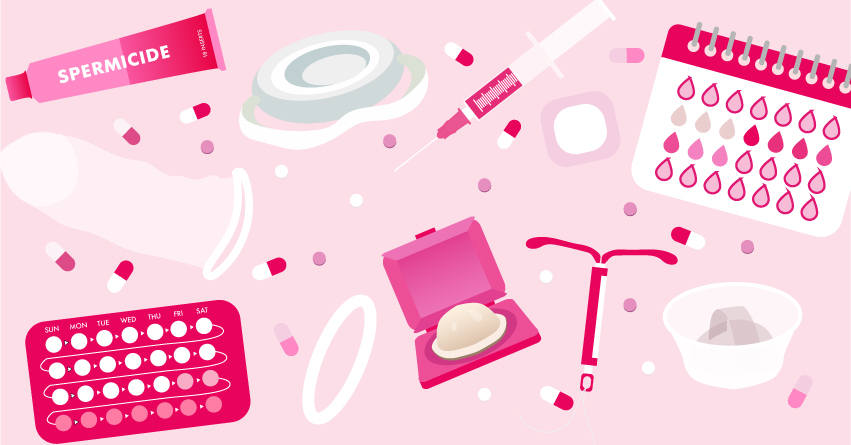
Now that you’ve learned about the different types of birth control for women, we hope you’ll be able to figure out the most suitable methods for you. However, we sense that you still have a lot of questions in your mind.
1Will I gain weight if I use hormonal contraceptives?
If you’re afraid that hormonal birth control like patches or implants will affect your pounds, worry not! Hormonal Birth control will unlikely cause you to gain weight. This has been proven by several studies such as this one from the National Center Biotechnology Information.
2Can drinking alcohol affect my birth control?
If you’re using birth control types that require minimal maintenance, such as IUDs and implants, drinking alcohol wouldn’t affect that much. However, if you’re using contraceptives that require you to use it before sex, then being tipsy/drunk will make it harder for you to put it correctly.
3Does birth control cause blood clots?
Most birth control would never cause blood clots. However, hormonal contraceptives that contain estrogen may cause it, only if your family has a history of stroke, blood clots, and heart attack. This is why when trying new birth control, research thoroughly about its key ingredients.
4What are the best birth control for smokers?
For female smokers that are under 35, you’re free to pick any birth control method. However, for female smokers over 35, you should avoid using birth control pills, vaginal rings, and birth control patches.
5Will I get infertile by using hormonal birth control?
Don’t worry, sweetie. Using long-term birth control methods such as the pill, implant, and IUD will not make you infertile. These contraceptives only interfere with your fertility when you’re using it.
6What’s the best birth control method for me?
There’s no birth control method that’s one-size-fits-all. If you’re having a hard time choosing, you may go to sexual health orgs or your trusted OB-Gyne to help you assess the best birth control for you.
7What are the best methods for women with high blood pressure?
If you have high blood pressure, steer away from contraceptives that contain estrogen in it such as birth control pills, vaginal rings, and birth control patches.
8Can hormonal contraceptives affect my mood?
It depends on the type of birth control and your state of mind. Hormonal contraceptives may cause mood swings, so if you’re already in an unstable mental state, we suggest to use non-hormonal birth control methods such as using the female condom or practicing abstinence.
9Will hormonal contraceptives make me sick?
Some hormonal birth control methods such as pills can make you throw up, give headaches, or make you dizzy. Getting side effects is normal especially if you’re using hormonal contraceptives for the first time. However, if these side effects keep on happening and are getting worse, stop using that birth control and consult your doctor immediately.
10Do I have to be sexually active to be on birth control?
Whether you’re doing the deed every week or every month, it’s best to take control of your sexual health. Besides, using contraceptives–particularly the hormonal types—brings a lot of health benefits such as reducing your PMS symptoms.
Takeaway
When getting that D, make sure to prioritize your sexual health. Having unprotected sex may be fun for you and your man, but do you really want to deal with an unexpected baby or sexually-transmitted disease?
With that, go ahead and consult your trusted OB-Gyne. But if seeking a medical professional can be intimidating, you may start off with doing some research online and consulting through sexual health organizations. People from these orgs are sex-positive individuals, so you’re safe and free from judgments. Have a safe and blissful experience!
